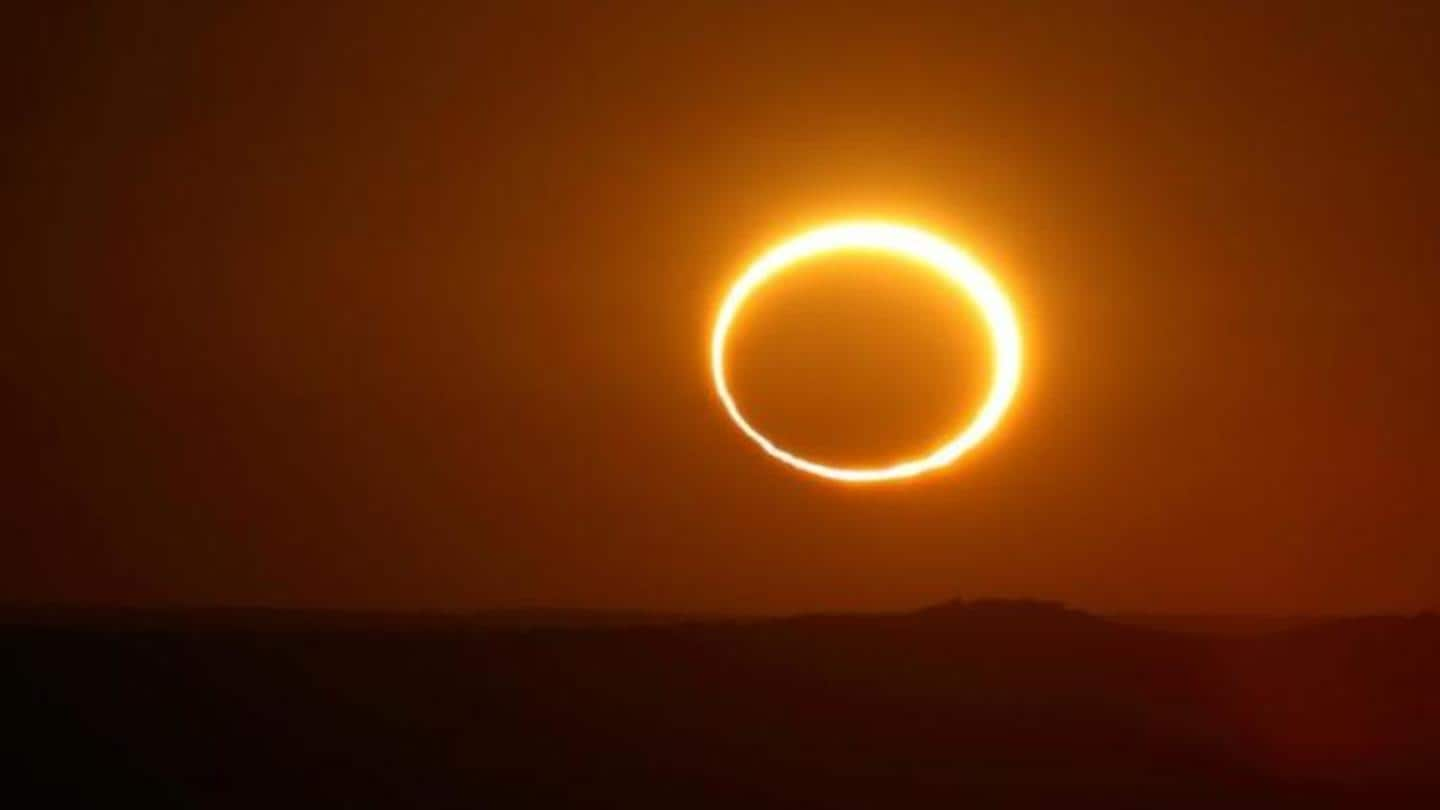
India to witness annular solar eclipse today; details here
What's the story
India will witness an annular solar eclipse on Sunday morning.
An annular solar eclipse occurs when the Moon falls between the Earth and the Sun, but the outer rims of the Sun continue to be visible. This leaves a spectacular "ring of fire" visible.
The full annular solar eclipse will be visible from North India while the other regions will see a partial eclipse.
Details
What are the eclipse timings?
According to NASA, Sunday's eclipse started at 9:15 am IST and will end at 4:04 pm. The maximum eclipse, when the "ring of fire" can be seen, will be visible at 12:08 pm.
According to the Nehru Planetarium, the eclipse will first be seen in Bhuj, Gujarat at 9:58 am IST, and last at 2:29 PM IST from Dibrugarh, Assam.
Visibility
Which parts of India can see the eclipse?
Only parts of North, West, and East India will be able to see the solar eclipse clearly, with an eclipse magnitude of around 0.80, according to NDTV.
A narrow path stretching West-East across North India will see an eclipse magnitude of 0.9940. A total eclipse has a magnitude of 1.
From South India, an eclipse magnitude of 0.30 to 0.70 will be visible.
Information
Parts of Rajasthan, Haryana, and Uttarakhand can see annular phase
The narrow path along which the annular phase of the solar eclipse will be visible around noon includes parts of Rajasthan, Haryana, and Uttarakhand. Dehradun, Kurukshetra, Chamoli, Joshimath, Sirsa, Suratgarh are some of the prominent places along this path.
Live stream
Where can you live stream the eclipse?
If you cannot catch the eclipse, you can live stream it online.
The Aryabhatta Research Institute of Observational Sciences has started the live streaming of the eclipse on Facebook and YouTube from 10 am.
The Indian Institute of Astrophysics and the Virtual Telescope Project will also be hosting live streams of the eclipse.
You can also stream it from the Nehru Planetarium's YouTube channel.
Precautions
What precautions do you need to follow?
Looking directly at the Sun may cause permanent damage to one's retinas, hence, it is advisable to follow a set of precautions to watch the eclipse.
You can view the eclipse through special glasses or by using a pinhole imaging technique.
Avoid looking directly at the Sun, or through ordinary sunglasses. Looking at the eclipse in a reflection is also not recommended.
Twitter Post
Here's a government advisory listing do's and don'ts
It is good to be excited about #SolarEclipse2020, but please remember
— PIB in Maharashtra 🇮🇳 (@PIBMumbai) June 21, 2020
🚨Viewing it without proper care can damage your eyes
Please make sure you view the annular #SolarEclipse safely
📘https://t.co/4zq3TU5cAg
📷- @VigyanPrasar pic.twitter.com/E8D6swajh9
Information
When will the next solar eclipse occur?
This is the last solar eclipse to be visible from India for the next 28 months, according to the Nehru Planetarium. If you fail to catch Sunday's eclipse, you will have to wait until October 25, 2022, for the next one.